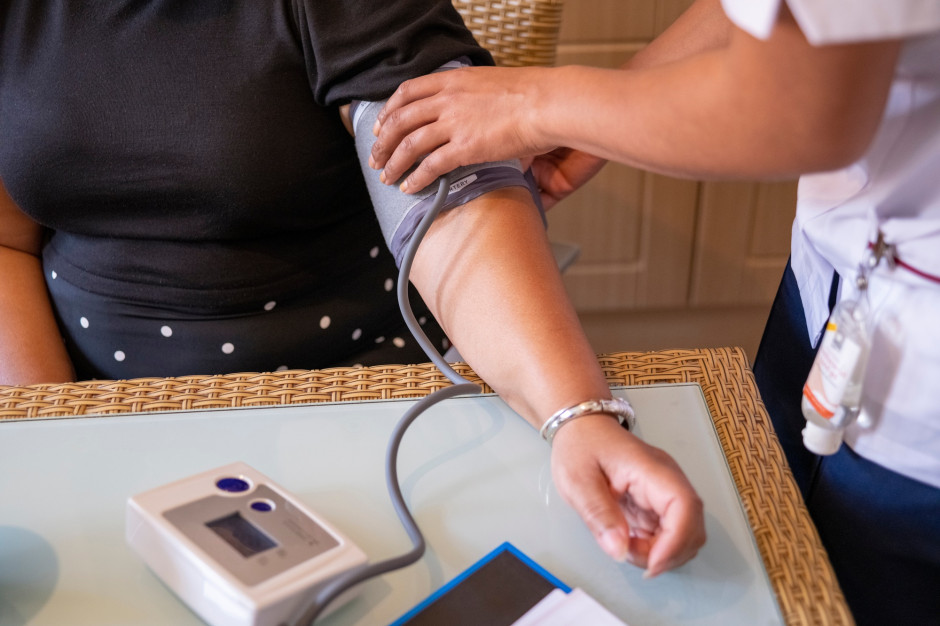
Allergy
There is nothing like a late summer day to remind you that you still have to take your antihistamines. The world Allergy Organization estimates that 20% of the population in developed countries has some kind of allergy, one in four children suffers from it and 87 million people in general suffer from some kind of allergy.
The term “allergy” was first used by Clemens von Pirquet in 1906. Allergy is the result of a hypersensitivity of the immune system to substances in the environment. The symptoms of various allergies may include swelling, red eyes, runny nose, shortness of breath, sneezing, coughing, wheezing, a rash or hives.
The climate changes taking place before our very eyes will most likely contribute to an even more widespread prevalence of allergic diseases. Parents with allergies are far more likely to have children with allergies and the allergies in these children are likely to be stronger than those appearing in children of non-allergic parents. Studies have shown that allergic reactions are more common in the industrialized world. The use of antibiotics in the first year of a child’s life is also linked to a higher occurrence of allergy and asthma. The same applies to children born through C-section rather than through a natural vaginal birth. Excessive use of cleaning products in the home also increases the risk of asthma. Breastfeeding as well as, early exposure to potential allergens may actually lower the risk of developing allergies in older children. It is also advised to take probiotic supplements during pregnancy and during infancy to prevent atopic dermatitis. Stress should be avoided as it can worsen allergic conditions.
The future does not look bright. Climate change will increase the incidence of allergic diseases. Rising atmospheric concentrations of carbon dioxide are responsible for the increase in the Earth’s temperature and, at the same time, for the extension of the vegetation and pollen seasons and the increased production of pollen. The warming climate is also causing a gradual northward shift of the existing boundaries of occurrence of individual plants, one such example is ragweed, which has already reached Poland from southern Europe and is now one of the most clinically significant pollen allergens.
We can distinguish the following types of allergens:
- foodborne (cow’s milk, eggs, citrus fruits, strawberries, apples, peanuts),
- contact (detergents, latex, nickel, chrome, basalt),
- inhalation (pollen, mould spores, dust mites, animal hair, wool, feathers),
- those entering the body by injection (insect and reptile venom),
- allergens entering the body via various routes (mainly drugs, e.g. NSAIDs and antibiotics).
Doctors have several options when it comes to treating allergies. The most common is the use of antihistamines to block histamine. These can be in the form of pills or liquids. Some of them are likely to cause drowsiness and the patient should be advised against driving and operating machines (Diphenhydramine, Chlorpheniramine).
The following antihistamines are less likely to cause drowsiness:
- Cetirizine (Zyrtec, Zyrtec Allergy),
- Desloratadine (Clarinex),
- Fexofenadine (Allegra, Allegra Allergy),
- Levocetirizine (Xyzal, Xyzal Allergy),
- Loratadine (Alavert, Claritin).
Antihistamines also take the form of nasal sprays and eye drops. Decongestants are used to relieve nasal and sinus congestion caused among others, by hay fever (allergic rhinitis). One such decongestant sold as an OTC drug is pseudoephedrine (Sudafed). First-generation antihistamine diphenhydramine (Benadryl) is also an OTC product. Unfortunately first-generation antihistamines may cause side-effects such as dry mouth, nose, and throat, headache and vision problems. Second-generation antihistamines are also sold over the counter (for example Claritine). Loratadine is its main active ingredient. Also on offer is Allegra (Fexofenadine being its main active ingredient). Doctors may also chose to use corticosteroids to treat allergy-related inflammation (e.g. Budesonide). Inhalers are another option - inhaled corticosteroids are used to treat asthma (e.g. (Pulmicort Flexhaler). Specific immunotherapy is recommended for patients for whom pharmacological methods have proved to be ineffective. It allows the symptoms of the disease to be alleviated and often completely resolved.
Alternative remedies for allergy:
- avoidance (whenever possible),
- air filters,
- acupuncture,
- probiotics,
- vitamin C,
- eucalyptus oil,
- peppermint oil,
- bromelain (an enzyme found in papaya and pineapple),
- stinging net tle.
Słowniczek
alleviate – złagodzić
avoidance – unikanie
dust mites – roztocza
hives – pokrzywka
infancy – niemowlęctwo
liquid – płyn
mould spores – zarodniki pleśni
peppermint – mięta pieprzowa
prevalence – powszechne występowanie
occurence – występowanie
ragweed – ambrozja
rash – wysypka
reptile – gad
stinging nettle – pokrzywa zwyczajna
swelling – opuchlizna, obrzęk
venom – jad
wheezing – świszczenie
widespread – rozległy, szerzący się
Rozmówki
Farmaceuta: Hello, how can I help you? – Dzień dobry, w czym mogę pomóc?
Pacjent: I have a runny nose and red eyes – Mam cieknący nos i zaczerwienione oczy.
Could I also have a… (tu pada nazwa) please – Czy mógłbym/mogłabym także prosić o…
Farmaceuta: This should help (tu podać preparat) – To powinno pomóc.
These drops should help – Te krople powinny pomóc.
Apply two drops in each nostril – Niech pan/pani zaaplikuje dwie krople do każdego nozdrza.
Pacjent: Can you recommend something for itchy skin? – Czy może pan/pani coś polecić na swędzącą skórę?
Farmaceuta: I recommend this ointment/gel – Polecam panu/pani tę maść/ ten żel.
This is for external use only – To jest tylko do użytku zewnętrznego.
Pacjent: Can you recommend something to ease the cough? – Czy moglibyście polecić coś na złagodzenie kaszlu?
Farmaceuta: Take this cough mixture – Proszę zażywać ten syrop.
Please drink one teaspoon three times a day – Proszę pić jedną łyżeczkę trzy razy dziennie.
These tablets should help – Te tabletki powinny pomóc.
Please take one/two tablets a day/per day – Proszę brać jedną/dwie tabletki dziennie.
This should not be taken longer than five days – Tego nie należy zażywać dłużej niż pięć dni.
If the symptoms persist, please consult your doctor – jeżeli objawy się utrzymają proszę skonsultować to z lekarzem.
Please put fifteen drops into a glass of water and drink – Proszę dodać piętnaście kropli do szklanki wody i wypić.
Pacjent: Can you give me something for my swollen neck? – Poproszę coś na opuchniętą szyję.
I would like… – Chciałbym…
I need… – Potrzebuję…
Have you got… (nazwa leku preparatu) – Czy macie…?
Do you sell…? – Czy sprzedajecie…?
Farmaceuta: I am afraid this is a prescription drug – Obawiam się, iż to jest lek sprzedawany jedynie na receptę.
Uwaga! Język angielski jest o wiele grzeczniejszy i jeżeli mamy przekazać jakąkolwiek negatywną informację, warto ją „zmiękczyć”, używając formy I am afraid/I’m afraid, czyli „Przykro mi”.
Farmaceuta: But I can offer you this… – Ale mogę panu/pani zaproponować to…
Pacjent: Do I need a prescription for this? – Czy muszę mieć receptę na to?
Farmaceuta: No, this is an OTC drug – Nie to jest lekarstwo sprzedawane bez recepty.
Uwaga! Skrót OTC pochodzi od over the counter.
Farmaceuta: I am afraid this antihistamine is a prescription only drug – Przykro mi ten antyhistaminik jest wyłącznie na receptę.
Pacjent: The doctor gave me this prescription – Lekarz przepisał mi tę receptę.
Farmaceuta: Let me see… – Poproszę (w domyśle receptę)…
Pacjent: Here is the prescription – Proszę, oto recepta.
Farmaceuta: Do you have your prescription code number? – Czy ma pan/pani kod recepty?
Prescription code number please – Proszę kod recepty.
I think we have it. Let me get that for you – Myślę, iż to mamy. Zaraz panu/pani przyniosę.
Pacjent: I feel a bit under the weather – Nie czuję się najlepiej.
Can you give me something for a stuffed nose? – Czy mogę prosić o coś na zatkany nos?
Farmaceuta: How old is the patient – W jakim wieku jest pacjent?
Please keep this medicine out of reach of children – Proszę trzymać poza zasięgiem dzieci.
Keep this in the fridge – Niech pan/pani trzyma to w lodówce.
Take this with your meals – Niech pan/pani bierze to wraz z posiłkiem.
This should not be given to children under the age of three – Tego nie należy podawać dzieciom do lat trzech.
Make sure you swallow this before eating – Proszę to połknąć przed jedzeniem.
Pacjent: Should I take these tablets before or after a meal? – Czy powinienem/powinnam brać te tabletki przed czy po posiłku?
Farmaceuta: If the symptoms do not ease please consult a doctor – jeżeli objawy nie ustąpią proszę skonsultować to z lekarzem.
It would be better to consult a specialist – Byłoby lepiej skonsultować to ze specjalistą.
Please take this preparation twice a day – Proszę brać ten preparat dwa razy dziennie.
Please take one tablet before you go to sleep – Proszę zażyć jedną przed pójściem spać.
Uwaga! Po angielsku nie mówimy bezosobowo typu „Brać jedną tabletkę przed snem”.
Farmaceuta: Our pharmacy is open 24 hours – Nasza apteka jest czynna 24 godziny na dobę.
You may also order online and collect the products in our pharmacy – Może pan/pani także zamawiać online i odebrać produkty w naszej aptece.
Do you need anything else? – Czy potrzeba coś jeszcze?
Would you like to try one of our herbal remedies? – Czy chciałby pan/pani wypróbować jeden z naszych ziołowych leków?
Peppermint oil are very good for (i tu wymienić co) – Olejek z mięty pieprzowej pomaga na…
Pardon? Could you repeat this please? – Przepraszam nie dosłyszałem/am. Czy mógłby pan/pani powtórzyć?
Here you are – Proszę (gdy podajemy coś).
Uwaga! Po angielsku słowa please używamy jedynie w zdaniu, a gdy podajemy coś komuś, to używamy here you are i tylko wtedy.
Pacjent: How much do I owe you? – Ile jestem winien?
Farmaceuta: This comes to 85 zloty – Razem to będzie 85 złotych.
Pacjent: Can I pay with my card? – Czy mogę zapłacić kartą?
Farmaceuta: Of course – Oczywiście.
Get well soon – Życzę zdrowia.
Thank you. See you next time – Dziękuję. Do zobaczenia następnym razem.

















